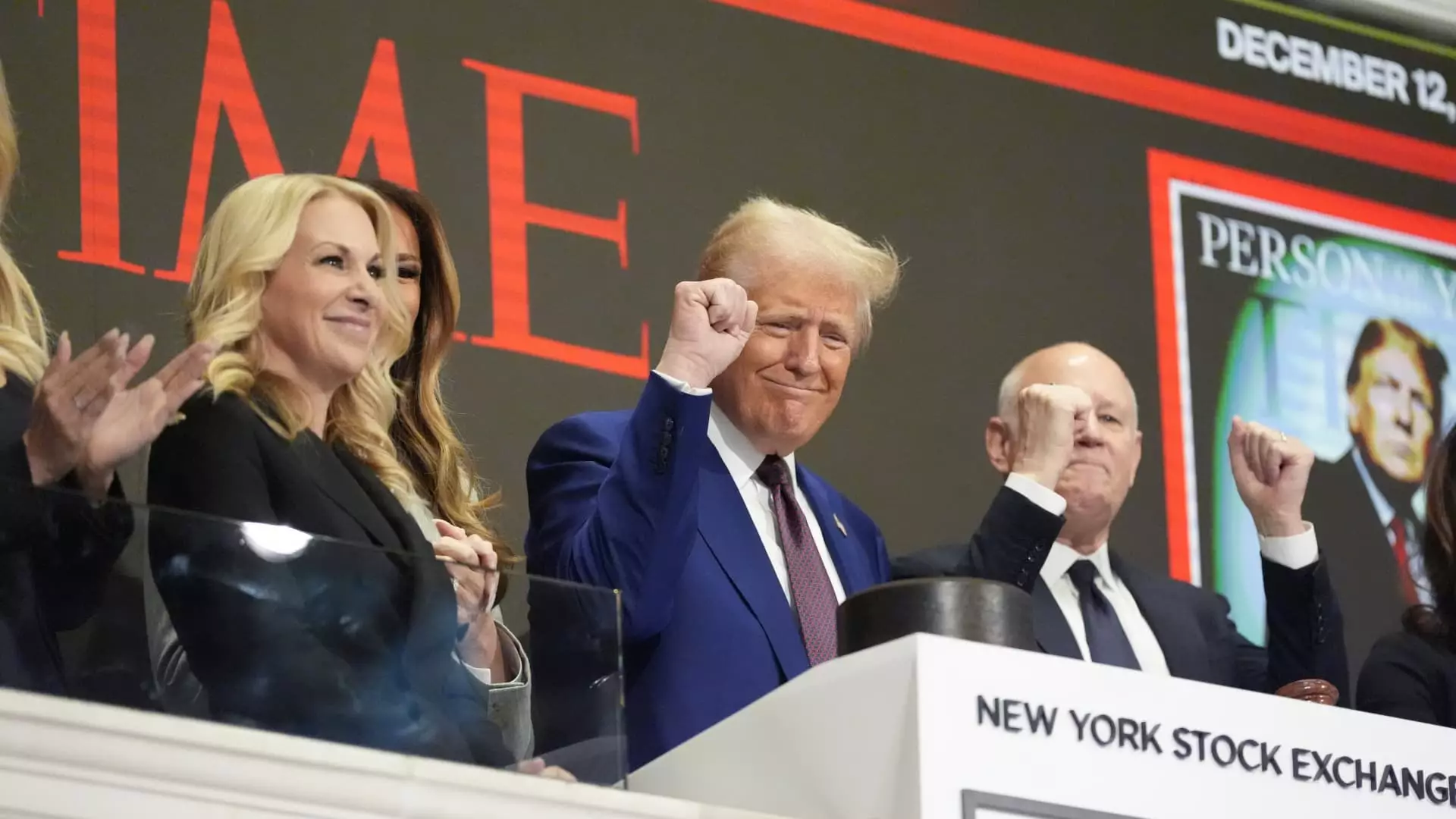In a highly publicized event at the New York Stock Exchange (NYSE), President-elect Donald Trump officially signaled the launch of his economic agenda. Amidst a gathering of key figures in finance and business, Trump expressed a vigorous determination to steer the U.S. economy towards unprecedented heights. This moment served not only as a ceremonial act of ringing the opening bell but also as a precursor to expansive economic policy strategies aimed at revitalizing both Wall Street and Main Street.
Trump’s arrival at the NYSE came with significant fanfare. Joined by his family, notable political allies, and influential business executives, the atmosphere buzzed with enthusiasm. His reiteration of promises to revitalize the U.S. economy reflected the echoes of prior campaigns, where halcyon visions of growth and prosperity were at the forefront. The gathering, underscored by chants of “U-S-A,” showcased the unwavering support from financial titans such as Goldman Sachs and Verizon’s leadership, who were eager to witness the unfolding of Trump’s plans firsthand.
One of Trump’s defining commitments involves providing substantial incentives tailored specifically to foster corporate growth within the U.S. The incoming administration’s pledge to reduce the corporate tax rate from 21% to 15% for companies that manufacture domestically signifies a strategic shift aimed at encouraging local production. This tax strategy aims to entice corporations to invest in American infrastructure and labor, with Trump indicating that failing to build within the U.S. would leave companies subject to a higher tax regime.
Moreover, Trump has pledged to enhance U.S. oil production, suggesting this would not only alleviate inflationary pressures but also lead to lower grocery prices. However, such assertions are fraught with complexity. The relationship between energy production, inflation, and commodity prices can be volatile, and the administration may face challenges in achieving these objectives, especially when considering the global nature of the economy. The promise of boosting oil drilling shines a light on Trump’s ongoing alignment with energy-producing states and industries, reflecting an assertive commitment to deregulation and economic stimulation.
Additionally, Trump has voiced a keen interest in collaborating with some of the business world’s most prominent figures, including technology moguls like Mark Zuckerberg, Elon Musk, and Jeff Bezos. This proactive approach signifies a tactical pivot towards gathering insights and strategies from industry experts who have successfully navigated the complex landscape of modern business. By emphasizing open channels of communication with these leaders, Trump aims to position his administration as receptive to innovative ideas that could propel the nation’s economy forward.
Critics, however, might argue that such closeness to corporate elites could perpetuate a system favoring wealthy stakeholders at the expense of broader economic equity. Striking a balance between enhancing corporate interests and addressing the needs of average Americans remains a crucial challenge. As Trump aims to meld the aspirations of Wall Street with those of Main Street, the success of such integration may depend on how effectively his policies can translate into tangible benefits for the wider populace.
As Trump prepares to take office on January 20, the weight of his promises looms large. While optimism fills the air, significant hurdles await the new administration, including addressing existing economic disparities and managing the ramifications of a rapidly changing global economy.
Moreover, economic forecasts are often influenced by an array of external variables, including geopolitical tensions, supply chain disruptions, and market volatility. The complexity of the interwoven global economy could render some of Trump’s bold initiatives overly ambitious if not navigated with caution and expertise.
In sum, Trump’s NYSE appearance marked a clarion call for a transformative economic era under his leadership. As he prepares to implement a suite of policies designed to spur growth and investment in the U.S., the outcomes of these initiatives will be closely scrutinized. Whether Wall Street and Main Street can thrive concurrently remains an open question, dependent on the administration’s ability to execute its ambitious agenda while staying attuned to the needs of all Americans.


Leave a Reply